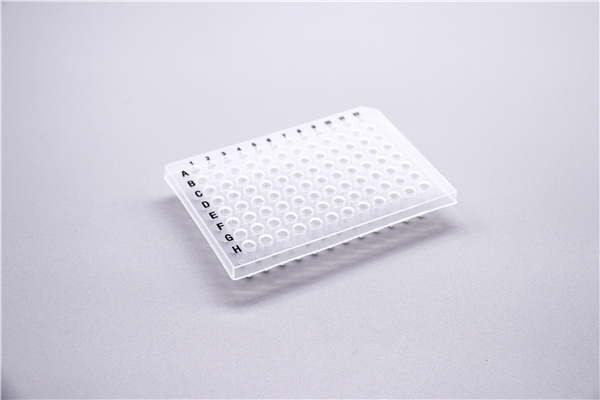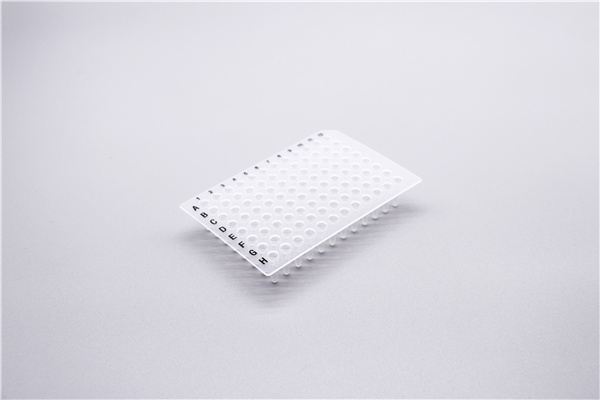PCR plates usually use 96-well and 384-well formats, followed by 24-well and 48-well. The nature of the PCR machine used and the application in progress will determine whether the PCR plate is suitable for your experiment.
skirt
The "skirt" of the PCR plate is the plate around the plate. The skirt can provide better stability for the pipetting process during the construction of the reaction system, and provide better mechanical strength during automatic mechanical processing. PCR plates can be divided into no skirts, half skirts and full skirts.
Skirtless panels lack the surrounding panels. This type of reaction plate can be adapted to the modules of most PCR machines and real-time PCR machines, but it is not suitable for automation applications.
The semi-skirt board has a short edge around the edge of the board to provide sufficient support during the pipetting process. Most PCR machines use a semi-skirt board.
The PCR plate with full skirt has an edge panel covering the height of the plate. This plate format is suitable for PCR machines with protruding modules (which can be conducive to automated operation) and can be firmly adapted. The full skirt also enhances mechanical strength, making it ideal for using robotic platforms in automated workflows.
Bannian
The surface of the board refers to its upper surface. The full flat panel design is suitable for most PCR machines and is easy to seal and handle. The edge raised plate design has good adaptability to certain PCR instruments, which helps to balance the pressure of the hot cover without the need for an adapter, ensuring good heat transfer and reliable experimental results.

color
PCR plates are usually available in a variety of different color formats to facilitate visual differentiation and identification of samples, especially in high-throughput experiments. Although the color of the plastic has no effect on DNA amplification, when setting up the real-time PCR reaction, compared with transparent consumables, we use white plastic consumables or frosted plastic consumables to achieve sensitive and accurate fluorescence detection. .
Comparison of the results of qPCR using transparent and white consumables. Compared with transparent holes, the Ct value of white holes is lower (higher sensitivity). The white holes also show higher consistency in technical repetitions.
White consumables improve the sensitivity and consistency of qPCR data by preventing fluorescence from refracting out of the tube. When the refraction is reduced by Z, more signal is reflected back to the detector, thereby increasing the signal-to-noise ratio. In addition, the white tube wall can prevent the fluorescent signal from being transmitted to the PCR instrument module, avoiding being absorbed or inconsistently reflecting the fluorescent signal, so that the difference in repeated experiments is reduced to Z low.
Profile
The shape of the PCR plate refers to its height, so "low profile" means lower height. The shorter design of low-volume consumables reduces the space above the reaction system to a greater extent, reduces the effect of evaporation and improves the heat transfer efficiency. Therefore, low-capacity consumables, that is, "fast" boards or low boards, are preferred when compatible at the same time.
Cut corner
The cut corner is a missing corner of the PCR plate, which depends on the instrument that needs to be adapted. The cut corner may be located at H1, H12 or A12 on a 96-well plate, or at A24 on a 384-well plate. The ANSI/SBS format of PCR plate with cut corners. In order to be compatible with different automated liquid handling high-throughput systems, the PCR plate should comply with the American National Standards Institute and the Society of Biomolecular Sciences. The ANSI/SBS-compliant board has standard dimensions, heights, hole positions, etc., which facilitates automated processing.

Hole edge
The common feature of PCR plates is a raised edge around the wells. This design can facilitate sealing with a sealing film to prevent evaporation.
mark
The alphanumeric markings on the PCR plate will help identify the location of individual wells and corresponding samples. It is usually a raised letter with white or black writing for easy viewing. However, raised marks in the automated process may interfere with the sealing process. For automation applications, lettering can improve the sealing of the outer edge of the board.
Dividable board
Certain 96-well PCR plates are designed to be separable. This design allows a whole 96-well plate to be easily divided into smaller plates, reducing the waste of consumables and reducing costs when a whole plate is not needed. Plates with 24-hole splits are common, but 32-hole and 8-hole splits can also provide convenience and flexibility.
Bar code
In high-throughput experiments, PCR plates with half skirts and full skirts can be labeled with barcodes for easy recording and tracking. For more reliable tracking, the barcode mark should not be scratched off and can withstand chemical attack and a certain temperature range (such as -196°C to 120°C). The location of the barcode reader may vary depending on the automation platform. In these cases, 4-sided barcodes or custom barcodes are alternative solutions.



